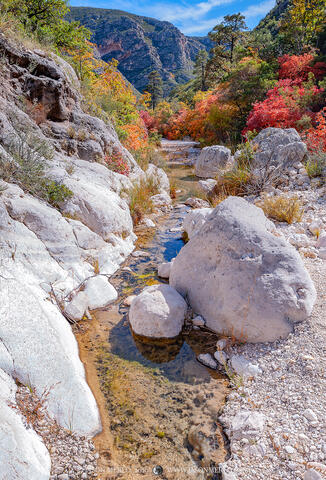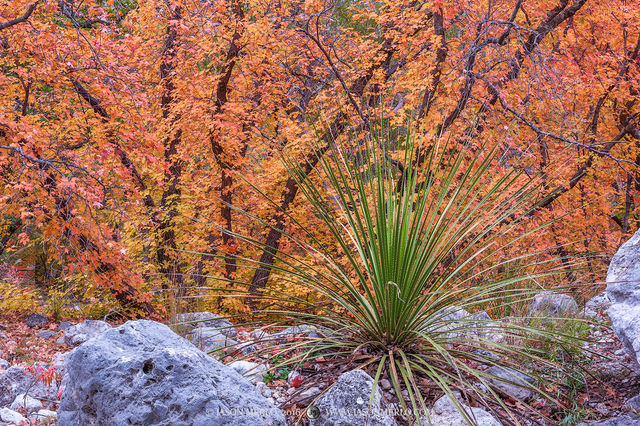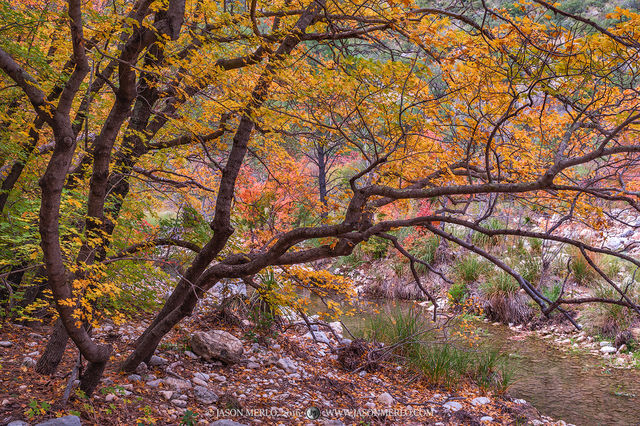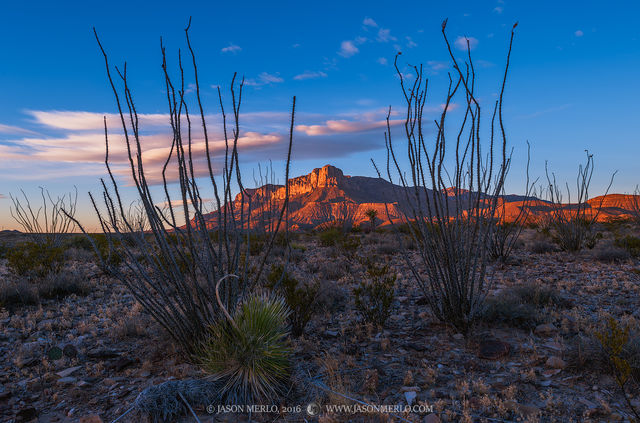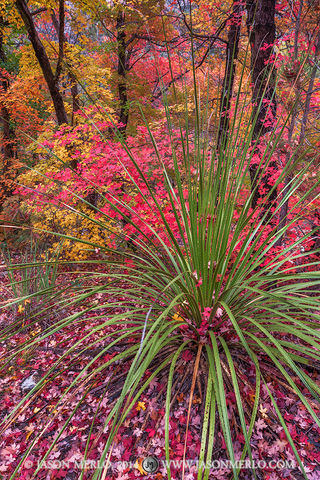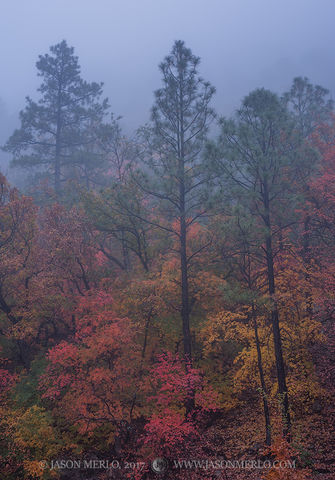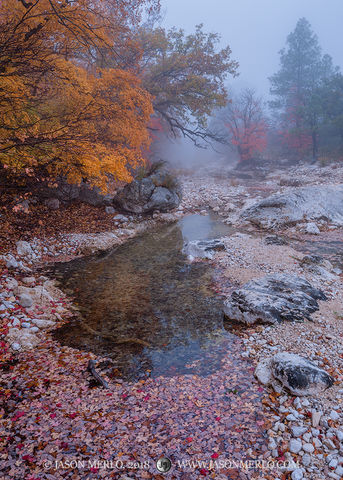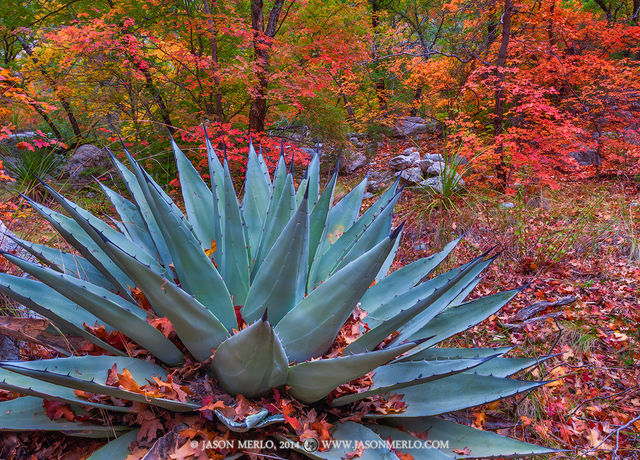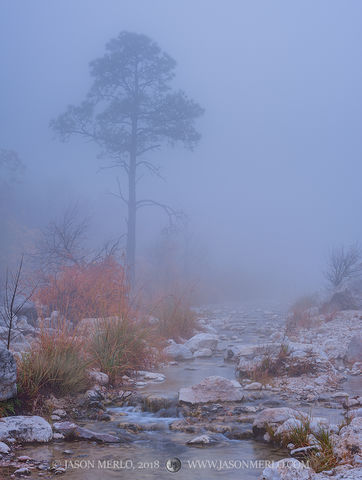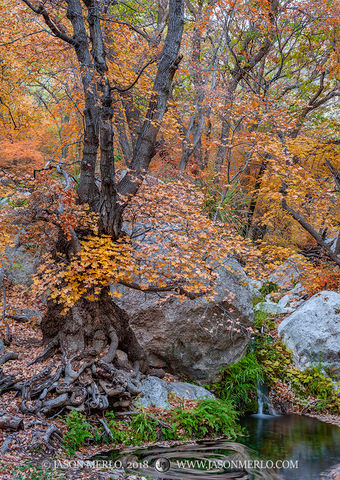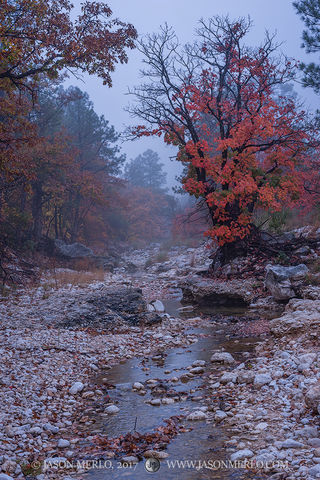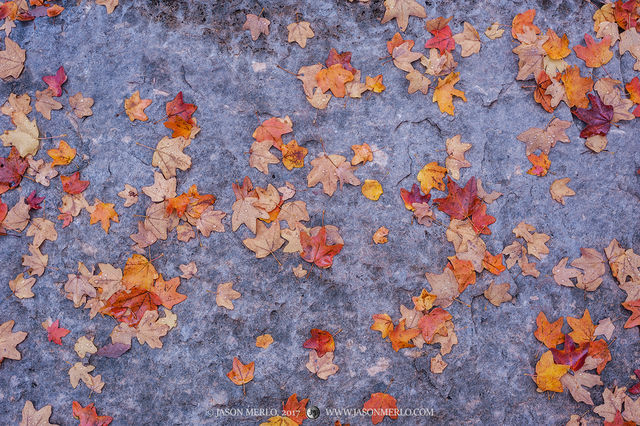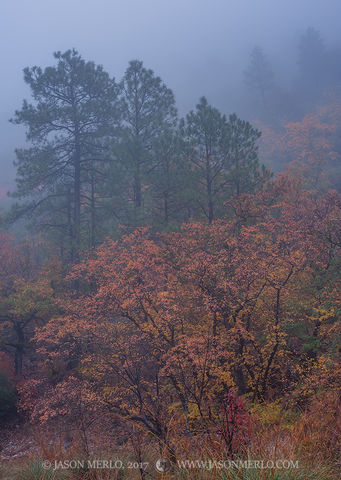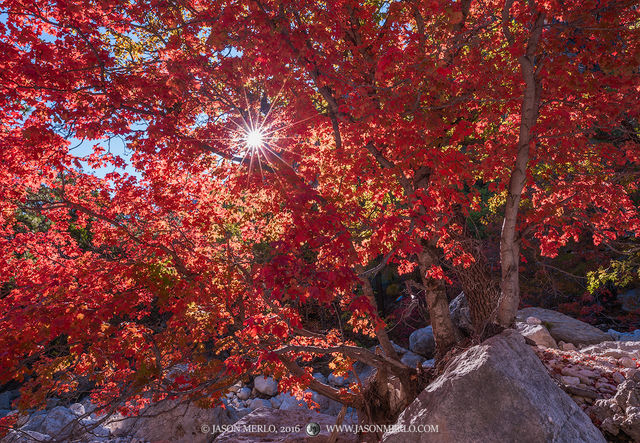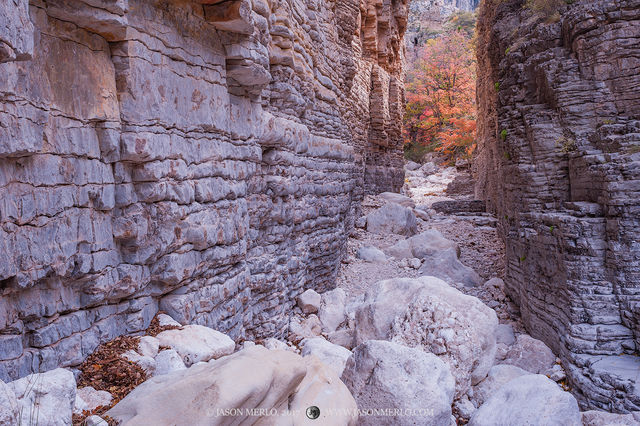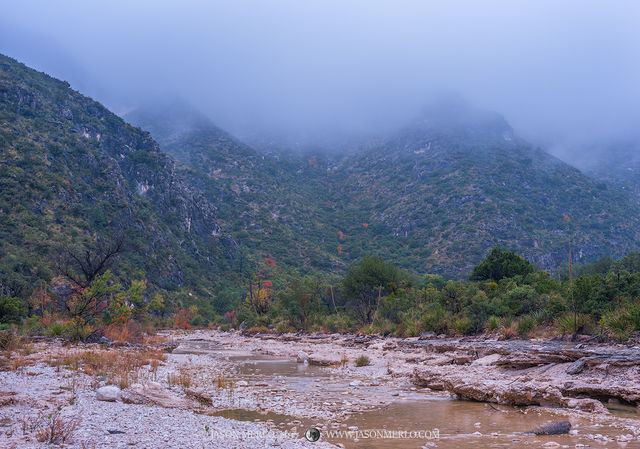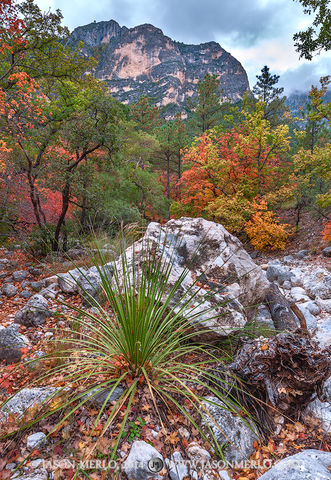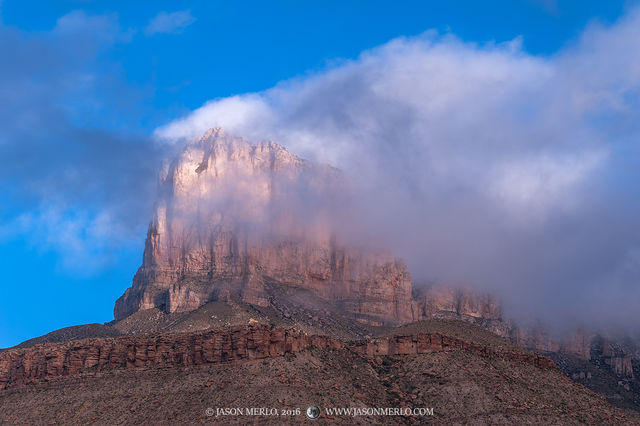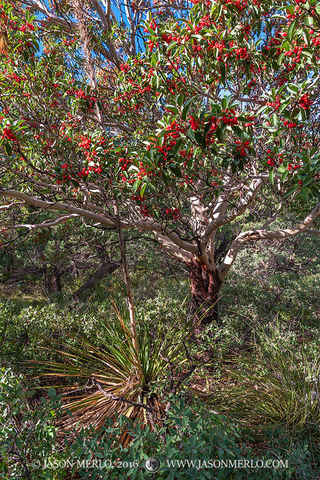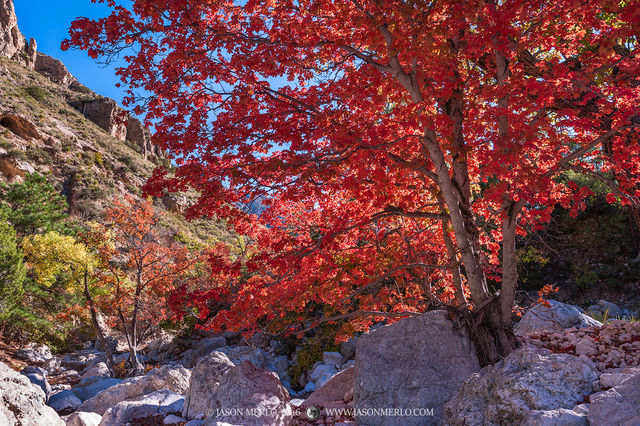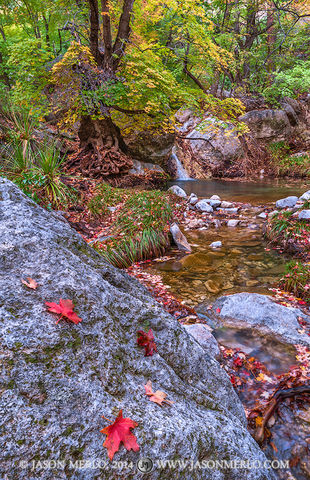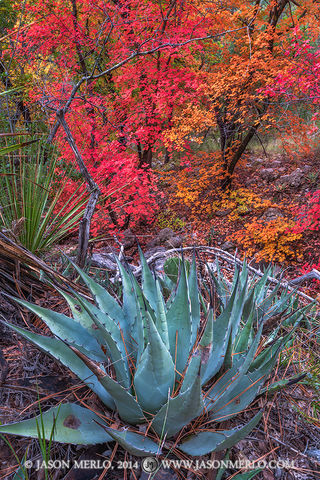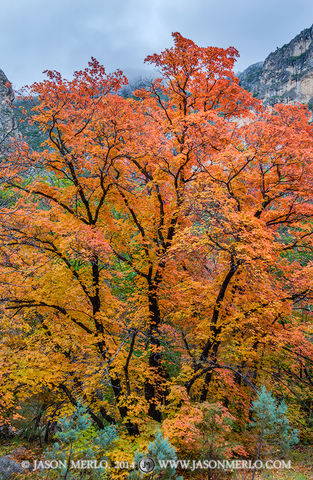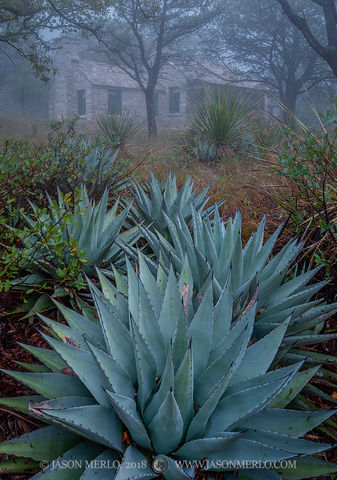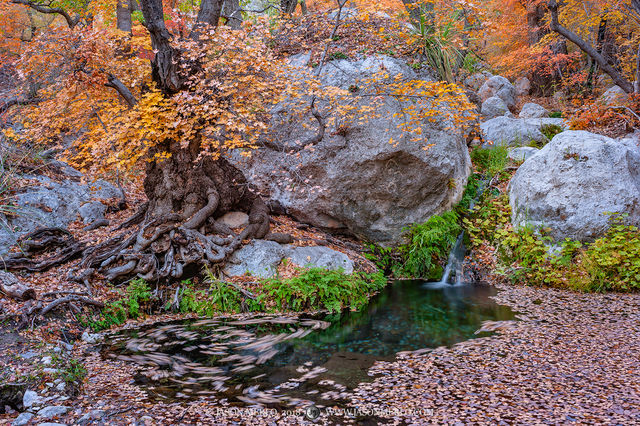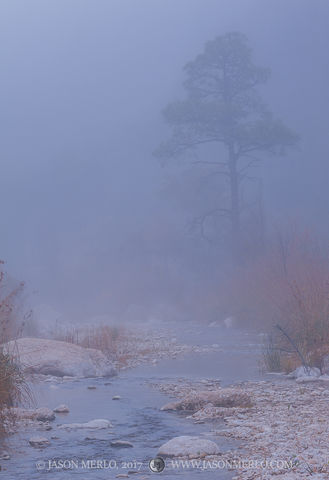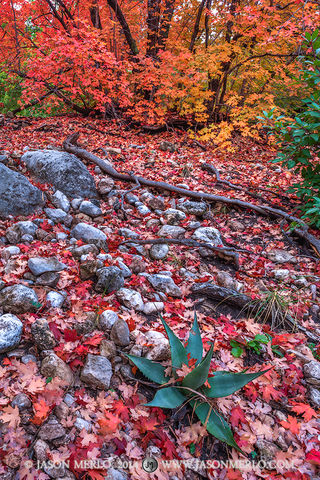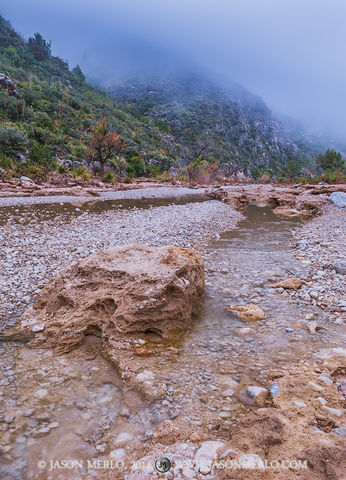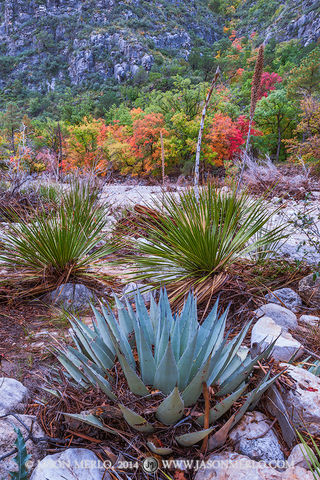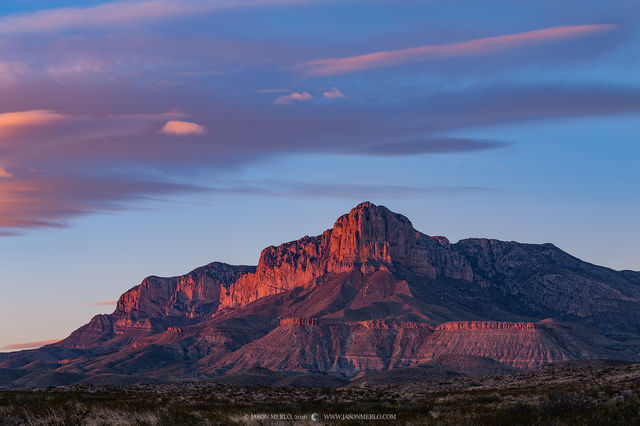About Guadalupe Mountains National Park Images
This gallery contains images of Guadalupe Mountains National Park, located in Culberson and Hudspeth Counties in West Texas. Guadalupe Mountains National Park protects the world's most extensive Permian fossil reef as well as the four highest peaks in Texas: Guadalupe Peak, Bush Mountain, Shumard Peak, and Bartlett Peak.
The mountains rise sharply from the desert floor to form an island of incredible diversity. Several different ecosystems are found within the park. These include the harsh Chihuahuan desert community, woodlands of oaks and maples, rocky canyons, and mountaintop forests of pine and fir trees. Together, these ecosystems provide habitat for 60 species of mammals, 289 species of birds, and 55 species of reptiles. This is a rugged mountain range, with deep, sheer-sided canyons, steep slopes, high ridges, and limited but dependable seeps and springs. Millions of years of geological transformation formed the skeleton of the Guadalupe Mountains, while powerful winds and the equally powerful forces of water carved its intricate character.
During the Permian period some 265 million years ago, a vast sea covered much of the region. Within this sea, calcareous sponges, algae, and other lime-secreting marine organisms, along with lime precipitated from the seawater, built up and formed a reef that paralleled the shoreline for four hundred miles. After this sea evaporated, the reef was buried in thick blankets of sediment and mineral salts, and was covered for millions of years until uplift exposed massive portions of it. Today, geologists and scientists come from around the world to study the geologic wonders held here.
The biological diversity within Guadalupe Mountains National Park is outstanding and includes more than 1000 species of plants. While many of these are common desert species such as ocotillo and prickly pear cactus, others are found only in the park and nowhere else in the world. The mountains are also home to thousands of fossils from marine animal and plant life living millions of years ago.
The park is also home to a place many refer to as 'the most beautiful spot in Texas," McKittrick Canyon. The canyon is a confluence of diversity; trees of the east, north, and west, the grasses of the plains, and the cactus and succulents of the desert join here with the animal life of both mountain and desert.
McKittrick Canyon is known best for its spectacular fall color. Deep within the canyon reside communities of bigtooth maple trees, relics of the last Ice Age, whose fiery red and yellow displays attract visitors from all over Texas during October and November.
Prints and Licensing
For more information regarding licensing images or purchasing photos as prints click here. If you have a specific inquiry please feel free to contact me using the website's contact form here.

